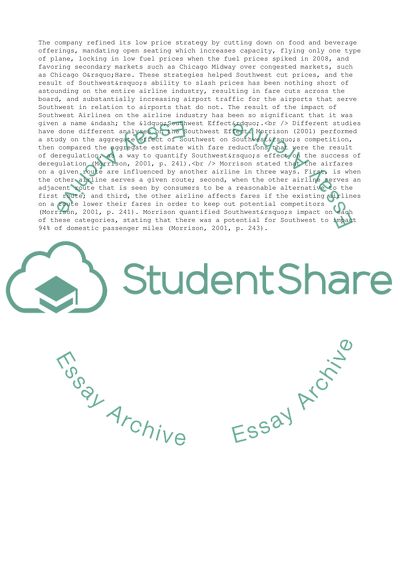Cite this document
(The Southwest Airlines Research Paper Example | Topics and Well Written Essays - 2000 words, n.d.)
The Southwest Airlines Research Paper Example | Topics and Well Written Essays - 2000 words. Retrieved from https://studentshare.org/management/1573922-the-impact-of-southwest-airlines-on-commercial-aviation
The Southwest Airlines Research Paper Example | Topics and Well Written Essays - 2000 words. Retrieved from https://studentshare.org/management/1573922-the-impact-of-southwest-airlines-on-commercial-aviation
(The Southwest Airlines Research Paper Example | Topics and Well Written Essays - 2000 Words)
The Southwest Airlines Research Paper Example | Topics and Well Written Essays - 2000 Words. https://studentshare.org/management/1573922-the-impact-of-southwest-airlines-on-commercial-aviation.
The Southwest Airlines Research Paper Example | Topics and Well Written Essays - 2000 Words. https://studentshare.org/management/1573922-the-impact-of-southwest-airlines-on-commercial-aviation.
“The Southwest Airlines Research Paper Example | Topics and Well Written Essays - 2000 Words”. https://studentshare.org/management/1573922-the-impact-of-southwest-airlines-on-commercial-aviation.


